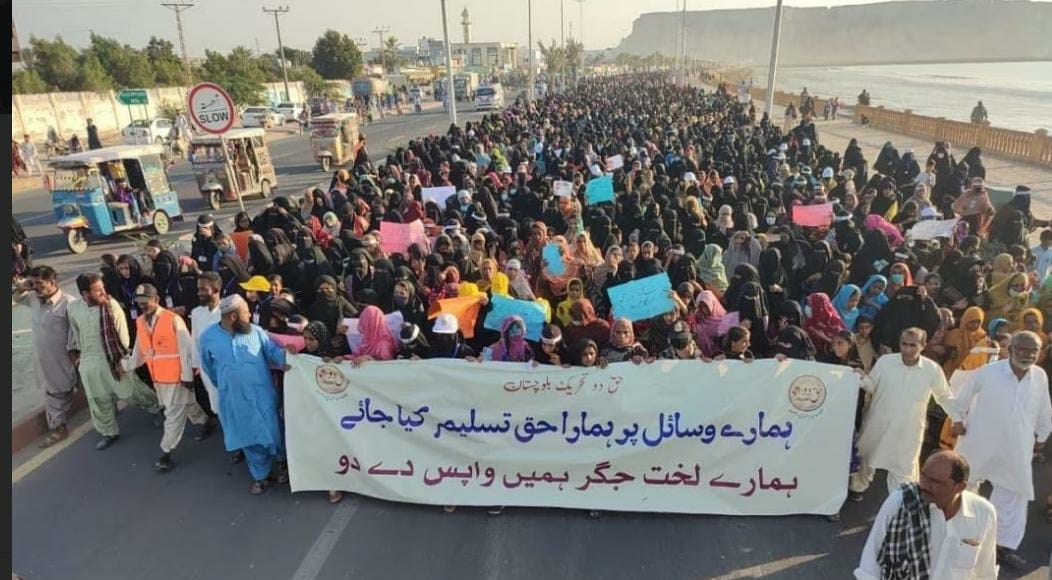As China-Pakistan Economic Corridor (CPEC) unfolds in Baluchistan, touted as a beacon of economic development, the province grapples with mounting fears among its native population. Baluchistan, rich in mineral resources, faces a stark reality where the benefits of these resources have eluded its people, raising concerns about equitable development, demographic shifts, and the potential erosion of indigenous rights. While Baluchistan possesses vast mineral wealth, its residents witness little of the income derived from these resources. Deprived of essential services like education and medical care, the province faces a glaring disparity compared to more favored regions.
Growing Fog of Fear
As CPEC progresses, the fog of fear thickens among the native Baloch. Concerns emerge that under the guise of economic development, CPEC might transform the Baloch people into a minority within their own land. The influx of settlers, job opportunities bypassing natives, and the issuance of fictitious Baluchistan domiciles to refugees intensify the sense of deprivation and disappointment within the community.
Historical Parallels and Apprehensions
Historical precedents, like the transformation of Karachi from a Baloch-dominant region to a minority, fuel apprehensions about Gwadar’s fate. Baloch students, politicians, and intellectuals fear that CPEC’s demographic changes may marginalize the native people, echoing the plight of indigenous communities elsewhere. Chief Minister Dr. Abdul Malik Baloch’s revelation of not being consulted adds to the growing sense of fear and distrust.
Military Undercurrents
Hyrbyair Marri contends that CPEC is more than an economic initiative—it conceals military and strategic dimensions. The massive deployment of 15,000 soldiers in Baluchistan ostensibly to protect Chinese workers and investments raises suspicions. Baloch voices argue that CPEC serves as a camouflage for a larger military agenda, and the National Coastal Development Authority (NCDA) and CPEC authority aim to establish military control in coastal Baluchistan.
Securing Military Bases and Demographic Changes
The Baloch assert that coastal areas are targeted for the settlement of millions of Punjabi and Han Chinese people, serving a dual purpose of securing military bases and altering demographics. Underground submarine bases and naval facilities in Jiwani, Sonmiani, and other areas are allegedly part of this strategy. In this envisaged scenario, Balochistan becomes a Chinese Kaliningrad, mirroring the military concentration and bases seen in Russia’s enclave. The Baloch people find themselves caught between promises of economic development and the encroaching shadows of militarization.
Ecosystem Exploitation:
Baluchistan’s rich marine ecosystem faces severe threats from Chinese and Pakistani trawlers operating indiscriminately. The ruthless fishing practices, including the use of wire nets throughout the year, defy local conservation practices. Baloch fishermen traditionally avoid fishing between May and August to allow fish reproduction, but this ecological consideration is disregarded by the occupiers, endangering multiple species and disrupting the marine habitat.
Coal-Fired Power Plants
CPEC introduces another environmental hazard with coal-fired electricity generation. Chinese coal power plants, considered outdated and environmentally detrimental, and are being installed in Gwadar. This move not only contributes to local pollution but also violates international agreements, notably the Paris Accord. Despite global efforts to transition away from fossil fuels, CPEC’s coal initiatives prioritize economic gains over environmental responsibilities.
Historical Disregard for Conventions
The Baloch perspective highlights historical disregard for international conventions. China’s past actions, such as conducting five nuclear tests in Baluchistan, concealing weapons of mass destruction, and sidestepping nuclear non-proliferation agreements, set a precedent for ignoring global norms. The plea questions why adherence to the Paris Accord should be expected when such critical global agreements were previously overlooked.
Conclusion
As CPEC unfolds, the challenge lies in safeguarding the rights of the Baloch people. The hidden dimensions of CPEC reveal a complex tapestry of economic exploitation, demographic concerns, military strategies, and environmental degradation. Baluchistan, at the heart of this unfolding narrative, grapples with the multifaceted impact of CPEC, challenging the rhetoric of economic development with a stark reality of hidden complexities and disastrous consequences. The international community’s attention to these nuanced challenges is crucial for ensuring that CPEC does not destroy the indigenous heritage and identity of Baluchistan.

